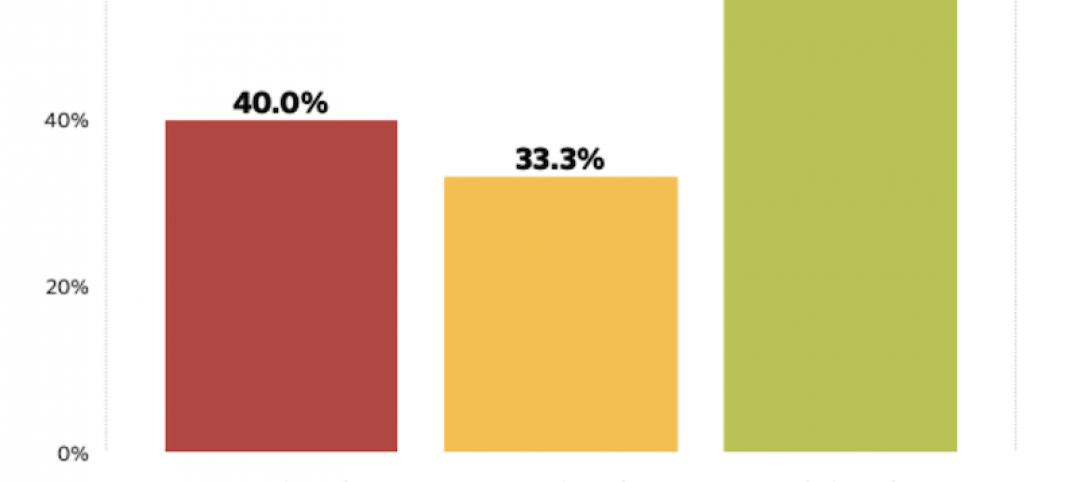Professional services firms are no strangers to the M&A landscape. If your firm hasn’t been part of a merger or acquisition, some of your competition certainly has. Global M&A activity broke all-time records during the first half of 2018 — reaching over $2.5 trillion in value, with US-based firms leading the charge. Healthcare, technology and media-related brands have experienced the most consolidation, but increasingly complex and global projects have also driven the demand for similarly large and complex organizations to service their needs.
Professional services firms have also taken advantage of M&A as a way to address an acute talent shortage in a fiercely competitive labor market. As leading experts gain more influence, there is a strong case for firms to consolidate their talent, infrastructure and relationships.
How do mergers and acquisitions impact a firm’s brand (maybe even multiple brands if we’re talking about a “house of brands”), marketing, and business development? Let’s explore some of the challenges and opportunities that may be in store.
Mind the gaps
Mergers and acquisitions bring all kinds of operational opportunities and challenges to the table. In this post, we’ll focus on strategic M&As from the perspective of branding and marketing. While a merger or acquisition can be a path to growth, teams must be vigilant to avoid introducing new problems that might damage a firm’s reputation or open up rifts between internal teams. Speaking of rifts, owners and the managers responsible for implementing the M&A process may have very different expectations for the resulting brand. This misalignment of vision can set up unnecessary tension and distraction early on, slowing down integration and leaving opportunities on the table.
When owners and key leadership teams develop their M&A strategy, they often focus on key benefits like:
Operational efficiency: Is the consolidated organization in a stronger position to streamline operations and reduce expense?
Business development: Do new teams provide access to untapped markets or better positioning throughout the lifecycle of projects?
Talent and infrastructure: Would a merger or acquisition bring compelling additions to leadership and expertise? Fully functional teams also reduce the need for costly training and mentoring.
Directors and practice leaders may not hear about potential M&As until negotiations are nearly complete — or already a done deal — so they may focus on more downstream concerns, such as:
Cultural alignment: Do combined teams share the same cultural values? How will we all get on the same page?
Clear communication: How will we message this merger or acquisition to current and potential clients? What about recruits? Will we lose our focus or create market confusion?
How are we going to update our brand identity materials?: There are a lot of branding projects to consider when teams join forces. Business cards, collateral, email signatures, website, event materials, IT, signage — the list goes on and on.
Both perspectives are valuable, so it is important to clearly define expectations and prepare your teams at the earliest practical point in your M&A branding and marketing adventure. They will have plenty to think about.
Market perception
Mergers and acquisitions are creating larger and more complex organizations with broader reach and more diverse services. In theory, the resulting firm can do things neither of its component companies could do before. In reality, however, many mergers and acquisitions produce poorly differentiated brands that lack the focus, personality or market appeal of their progenitors.
Hinge’s most recent professional services buying behavior research has shown that buyers prefer professional services firms that specialize — usually in either the buyer’s industry or the specific problem they need to solve. This preference for specialists presents a challenge to any firm that is drifting toward a more generic brand perception.
A plan that works
The good news is that with some planning, firms can navigate M&A branding challenges and benefit from the strategic opportunities a merger or acquisition presents. First, think about the audiences you will be addressing.
Internal audiences: From business-unit and company-wide leaders to subject matter experts, your executive team needs clear brand and positioning guidance. Focus first on people in your organization who have the most contact with current and prospective clients, then work inward. Paint a clear picture of your consolidated brand’s new position in the marketplace and how you will address the inevitable questions and objections. Client-facing teams will have to explain and defend the new brand, so be sure you develop the appropriate tools and training they need. In short, equip your team to be compelling advocates.
External audiences: Even with the best training and tools, internal teams will have limited reach when it comes to explaining your brand’s recent evolution. M&As introduce new teams, services, sometimes even completely new business models — so it is important to update your external communication tools to reflect the new firm. Without a strong message that explains your transformation, your audiences may come up with their own narrative, and it may not be a flattering one. Be prepared to control the message from the beginning. A press release alone may not be sufficient to define the newly coalesced company. A more sophisticated launch strategy may be required.
Now that we’ve divided our initiatives into the highest-level audiences, we work toward an objective understanding of overall brand equity and prioritize any key roles within those groups. What are the biggest questions and objections to address inside your organization and outside?
Example Internal Objections:
- How does our org chart change?
- Do our responsibilities change?
- Now that we have two teams that do X – who do I go to?
- How do I refer to our brand?
- When is our branded material going to be updated?
- Am I still going to have a job?
Example External Objections:
- Are my contacts and services going to change?
- What about “X” – isn’t that a conflict of interest?
- Who bought whom? What’s the relationship between the brands?
- Is leadership changing?
- What else do you do now?
- Now you’re the same as “X-generic-brand”.
- What does this mean for my project?
- Will we receive the same level of service?
- I’ve never heard of your brand. Are you new?
One of the best ways to get an objective view of your brand’s perception is to research your target audience. Interviewing clients and prospects will help you to identify objections and prioritize your messaging. Perhaps more importantly, you may uncover what values and traits resonate with specific audiences. Keep in mind that the validity of your results depends on the quality of your survey design and the experience and perceived impartiality of your interviewers, so this may not be the place to do it yourself.
When designing a baseline study, it pays to think about the future, too. Will you be repeating this research later to determine if you’ve actually achieved your marketplace perception and visibility goals? If so, design your study questions carefully so they make sense in the context of both an initial survey and a follow-up study. Using the same instrument, you can produce a valid, apples-to-apples comparison.
Internal team perspectives matter too. It’s a great idea to use a marketplace study as an opportunity to also “take the temperature” of your internal teams. You will be able to compare internal perceptions to external ones, which can show you how well attuned your people are to your clients’ perceptions. And the more involved teams are in your overall positioning discussion, the more likely they are to buy into the new strategy. I’m not advocating a committee consensus approach (that pretty much guarantees a long and torturous process), but by building a process that encourages internal input, the M&A branding process can be positive, inclusive and insightful.
When establishing an objective baseline, your firm also has the opportunity to assess relative brand strength to help determine next steps and prioritize communication efforts. For example, if a newly acquired firm has very little brand recognition in the marketplace, the faster it is incorporated in the stronger brand, the better. Chance are, this will take less investment than if that same firm was highly visible and had a strong reputation on its own. It’s a lot like physics – a stronger incoming brand will require more effort to offset existing brand perceptions and educate audiences about your new brand configuration.
Using your initial assessment of the merging firms’ brand strengths, your team can develop an appropriate milestone schedule and budget for implementation. If mergers and acquisitions are part of your firm’s ongoing growth plan, it would be worth the effort to create implementation plan templates for typical brand strength scenarios.
A few high-level examples:
- Plan 1 – Small brand with little visibility and reputation
- Fast integration schedule– focusing on internal training, maximum cost efficiency and promoting the value of its more visible brand assets.
- Plan 2 – Medium brand with regional visibility and reputation
- Moderate integration schedule– balancing cost efficiency with clear internal and external communication programs and local visibility campaigns.
- Longer integration schedule – considering pre-integration campaign, brand rollout, and post-integration campaign.
- Plan 3 – Larger brand with national or international visibility and reputation
In addition to laying out clear implementation milestones (are teams executing the plan as intended?), any plan should outline key visibility and engagement metrics so you can evaluate your progress and make adjustments along the way. Keep in mind that the longer the integration schedule, the greater the chance that market changes will move your goal posts.
Regular reporting and discussion around these metrics have secondary benefits, too: they support internal team engagement and help to improve moral and retention. Don’t forget to keep your internal teams informed about changes to your positioning or messaging. Tying your goals and progress back to internal survey findings are also a great way to show teams that they have been heard by leadership.
Once you’ve launched your newly integrated brand, consider scheduling another brand perception study a few months out to see what affect your merger or acquisition has had on your buyers. An impact study is also a valuable tool for internal team communication. Typically, it will provide areas to celebrate success and progress – and highlight areas that require continued focus and training.
More from Author
Hinge | May 22, 2023
2023 High Growth Study shares tips for finding success in uncertain times
Lee Frederiksen, Managing Partner, Hinge, reveals key takeaways from the firm's recent High Growth study.
Hinge | Dec 15, 2022
4 ways buyer expectations have changed the AEC industry
The Hinge Research Institute has released its 4th edition of Inside the Buyer’s Brain: AEC Industry—detailing the perspectives of almost 300 buyers and more than 1,400 sellers of AEC services.
Hinge | Jun 8, 2020
A time for fearlessness: Lessons from high growth AEC firms
As it turns out, one of the High Grown firms’ superpower is digital marketing.
Hinge | Feb 19, 2019
Strategies and tools to help navigate a successful M&A
Based on Hinge’s industry research, smaller firms typically spend a higher percentage of revenue on marketing and business development efforts for the same return.
Hinge | Jan 23, 2019
7 AEC marketing trends to watch for in 2019
As we enter into the new year, I’d like to walk through seven marketing trends that will impact AEC firms in 2019 and beyond.
Hinge | Aug 20, 2018
Marketing for engineering firms: 3 reasons to embrace the revolution
Firms who still aren’t embracing the fundamental shift away from traditional marketing techniques stand to fall further and further behind the competition.
Hinge | Jul 10, 2018
AEC marketing fundamentals can still have a role in winning new business
In our Internet-fueled world, it’s easy to get distracted by the latest online tools. But the boring stuff is still important, and you don’t want to lose sight of old-school techniques that are just as persuasive now as they were a few decades ago.
Hinge | Jun 13, 2018
How your AEC firm's brand affects recruiting top talent
There is a major shift in workforce demographics as upwards of 80 million baby boomers retire over the next fifteen years.
Hinge | Apr 27, 2018
4 reasons to pursue speaking engagements
We found speaking engagements were among the top ten marketing techniques that AEC firms employ.
Hinge | Apr 4, 2018
How to acquire speaking engagements and hone your skills
So, you understand the benefits, but how do you actually get started with speaking engagements?
















